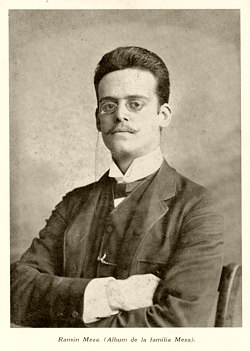3.7.11 The critical work of Ramón Meza (1861-1911)

Ramón Meza was a lover of classical literature and dedicated himself to the study of works dating from this period and the marvelous languages in which the mythologies, cosmogonies, and epic poems of antiquity were captured. His text, “A Historical-Critical Study of the Iliad and the Odyssey and Their Influence on Other Poetic Genres of Greece,” published in 1894, was based on this passion.
With this he obtained his PhD from the Faculty of Philosophy and Letters of the University of Havana and here he expresses his fundamental postulates with respect to literary creation, taking as a sine qua non requirement for artistic creation, the freedom of the subject from creeds, institutions and norms of any kind.
With respect to literary currents, he is in favor of a constant renewal of aesthetic canons and in this sense he recognizes the role that naturalism was playing at that time, at a time of rupture with romantic canons and of misunderstandings regarding the need to show stark reality without attacking it with moral judgments, which was also based on the scientific discoveries fundamentally of Charles Darwin and which Ramón Meza shared in essence, without for that reason renouncing romanticism or assuming that literature was completely alien to morality.
He was also interested in the theater, on which he apparently published some commentaries in “La Habana Elegante.” He was one of the few literary critics who championed comic theater, as he addressed the idiosyncrasies of the Cuban people. This was achieved through a process of repertoire refinement and other modifications, both in terms of the conception of plays, with a sense of humor that didn’t smack of vulgarity, and in terms of staging.
Meza also studied Aurelio Mitjans’s posthumous work, “A Study on the Scientific and Literary Movement of Cuba,” which reflects a mature and thoughtful exercise of judgment. Meza points out some of Mitjans’s shortcomings, but offers a positive and realistic assessment of the work and its successes in reconstructing the history of the island’s culture based on its basic manifestations.
The texts that have been located by Meza—although an extensive process of tracking and recovering his pieces is still pending, in order to subsequently compare and subject them to an analytical process—allow us to intuit that he was a shrewd critic, guided by legitimately aesthetic questions when issuing his judgments, endowed with a reflective charge that is surprising when compared with the levity with which others fired veritable darts at certain works and authors.








